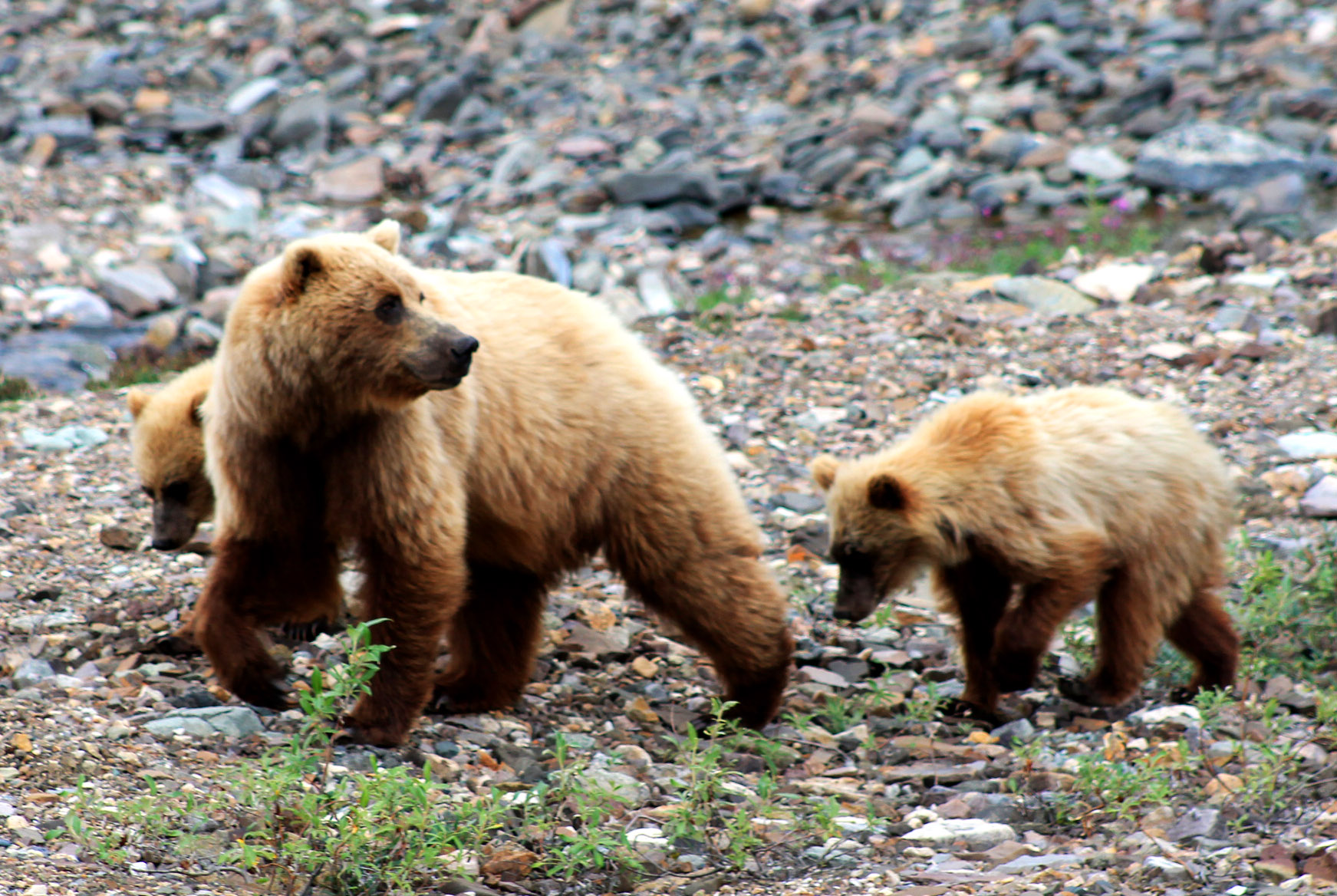Summer Wildlife Series: Bears

Bear encounters are a very real part of life in Alaska. From spotting a brown bear fishing for salmon while on a wildlife-viewing tour to having a black bear tumble through your skylight in pursuit of some birthday cupcakes (yes, this happened), We’ve rounded up all you need to know about bears in the Great Land, including where and when to see them!
Black bears
The smallest of Alaska’s bears, there are an estimated 100,000 black bears in the state. This omnivorous bear can weigh up to 350 pounds, but generally stays in the 180 – 200 pound range. Black bears are heaviest in the fall after fattening up for their winter hibernation. Although they are called “black bears,” these bears’ coloring can be brown, bluish and even white. They have an amazing sense of smell and much shorter claws than the other species of Alaska bears.
Where to go: Black bears can be found in forested areas across most of the state including Juneau and Gustavus, Prince William Sound and the North Gulf of Alaska coast, the Kenai Peninsula, upper Cook Inlet, the west side of Cook Inlet and many portions of the Yukon River drainage areas.
When to see them: The best time to spot a black bear is in the spring or summer, especially around dawn or dusk when they are feeding.
Brown bears
Brown bears are significantly larger than black bears, generally weighing around 400 – 500 pounds, but sometimes reaching up to 1,500 pounds! With a prominent shoulder hump and long claws, these mighty, lumbering animals don’t mess around.
Kodiak brown bears are a subspecies of brown bears that live on Kodiak Island in Southwest Alaska. These bears haven’t mixed with other Alaska brown bears for upwards of 12,000 years. Although there is little noticeable difference between the two, Kodiak brown bears do have a larger, unique skull.
Where to go: The best place to view brown bears is near areas where they congregate to feed – generally along spawning salmon streams. Brooks Falls in Katmai National Park and Preserve is a hot spot for hungry bears, boasting a population of more than 2,000 bears. The park is only accessible by boat or air taxi. Admiralty Island in Southeast Alaska has the densest population of brown bears in the world with one bear per square mile.
When to see them: Late July through early September is the best window of time for a brown bear sighting.
Polar bears
With features like white or yellowish fur, long necks and smaller heads, polar bears are rarely confused with their darker-colored counterparts. They have wide feet that help them paddle through the frigid Arctic waters and walk on top of ice. The average male weighs between 600 and 1,200 pounds, but they have been known to top the scales at more than 1,700 pounds. Females are a bit smaller and usually weigh between 400 and 700 pounds. The polar bears’ diet differs greatly from the omnivorous brown and black bears, consisting mainly of ringed seals, bearded seals, walruses and beluga whales.
Where to go: Polar bears sightings occur throughout the northern polar region of Alaska, on the coast of the Chukchi Sea and the Arctic Ocean. During the winter, polar bears have been known to wander as far south as the Kuskokwim Delta, St. Lawrence Island and St. Matthew Island in the Bering Sea.
When to see them: Polar bears can be viewed between August and October when there is less sea ice and they are more likely to venture on land.
Spotting a bear in Alaska is an unforgettable experience, but always remember to keep a safe distance and follow all safety guidelines when traveling in bear country.
Back to Blog